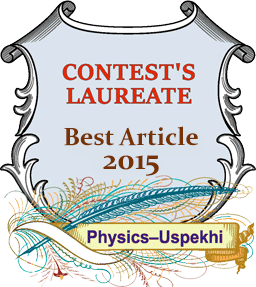 |
RSS feeds |
|
|||||
| Issue 12, 2025 |
|
||||||
|
|
|
||||||
Issues/2015/December |
← → |
| Reviews of topical problems |
On the nonequilibrium diagram technique: derivation, some features and applications
Lebedev Physical Institute, Russian Academy of Sciences, Leninsky prosp. 53, Moscow, 119991, Russian Federation

The logic of the nonequilibrium diagram technique (Keldysh diagram technique) appearance is reviewed. Simple examples are used to illustrate the implementation of the technique and to demonstrate possible difficulties and how to overcome them. Together with the well known facts, some lesser-discussed details are considered, in particular, whether the so-called three-component technique is necessary. A number of examples of nonequilibrium diagram technique (NDT) applications are given, including in particular tunneling systems, the linear response and other problems. We hope that some parts of the review will be useful even for those people for whom nonequilibrium diagram technique is well familiar.
|
Keywords: diagram technique, nonequilibrium diagram technique, Keldysh diagram technique, nonequilibrium processes, quantum kinetics
PACS: 03.70.+k, 05.60.Gg, 11.10.Wx, 72.10.Bg () DOI: URL: https://ufn.ru/en/articles/2015/12/b/  000371914300002 000371914300002  2-s2.0-84962798469 2-s2.0-84962798469  2015PhyU...58.1159A 2015PhyU...58.1159A Citation: Arseev P I "On the nonequilibrium diagram technique: derivation, some features and applications" Phys. Usp. 58 1159–1205 (2015) Received: 4th, August 2015, revised: 11th, October 2015, accepted: 12th, October 2015 Оригинал: Арсеев П И «О диаграммной технике для неравновесных систем: вывод, некоторые особенности и некоторые применения» УФН 185 1271–1321 (2015); |
|
© 1918–2025 Uspekhi Fizicheskikh Nauk Email: ufn@ufn.ru Editorial office contacts About the journal Terms and conditions |